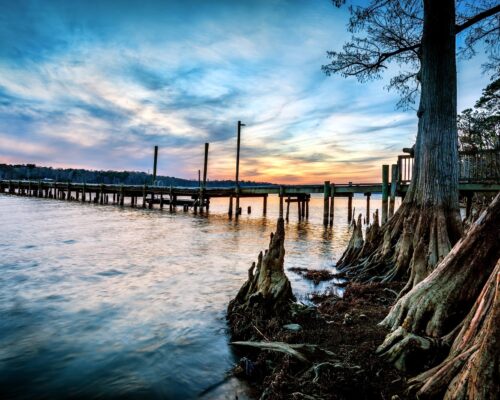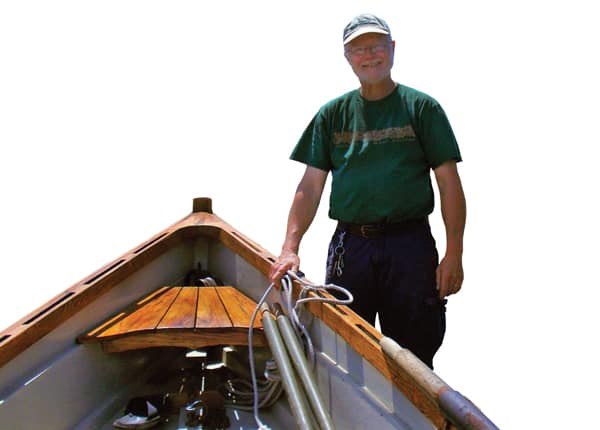As an anthropologist, political economist, eco-educator and author, Deacon Ritterbush has traveled the world. But she’ll tell you that her favorite place on the planet is whatever shoreline she happens to be strolling.
“The whole idea of beachcombing is that it’s an act of meditation. You’re walking the same footsteps over and over. Then you stop and pick something up, and it frees your mind from worries and anxieties and anger. You come to peace. You walk to peace,” she says. “Most people have one place where they know they belong. I belong on the beach.”
Ritterbush has a bachelor’s degree in anthropology and international relations, a master’s degree in cultural and political anthropology, and a doctorate in comparative politics, political economy and future studies. But the honorific she goes by wasn’t bestowed by academia. Years ago, a young summer camper, over-excited at finding some colorful sea glass, blurted out to his instructor the title she now embraces: “Dr. Beachcomb.”

The Maryland native has been wandering beaches for decades: at Nantucket, Gloucester, and Martha’s Vineyard in Massachusetts; in California and the Pacific Northwest; on the Orkney and Shetland islands off Scotland; and on the shores of her adopted island homes in the Pacific and South Pacific—American Samoa, the Kingdom of Tonga and Hawaii.
Her formative beach lies several hundred yards from where she’s seated on a warm spring day for our interview. This is Ritterbush’s East Coast home: the modest, two-story Annapolis cottage in which she grew up. (Her West Coast home is on Hawaii’s Big Island.)
The 72-year-old Ritterbush is tall with short gray hair and a wise, lightly lined face. Settled in a large armchair, she’s wearing her beachcombing garb: tan cropped pants and a loose-fitting white shirt with the sleeves rolled up. Her glasses are pushed back on her head and there’s a laptop in front of her on which she’s been typing the final pages of her next book, the second in a planned trilogy about her life and its most challenging chapter, surviving Stage IV ovarian cancer a decade ago.
Ritterbush and beaches go way back. She beachcombed as a toddler with her parents in the neighborhood of Bay Ridge, where the Severn River meets the Chesapeake. Childhood vacations meant bodysurfing and beach roaming in New Jersey, her mother’s home state.
“If you say Jersey Shore sea glass, in my mind it was Kelly green, cobalt blue and frosty white—and listening to the waves in whelk shells. If you say Chesapeake Bay sea glass, I’ll say lavender, teal and a soft, soft blue. The beach was my best friend—still is my best friend,” she says.

In her first book, A Beachcomber’s Odyssey: Treasures from a Collected Past, Ritterbush details how beaches became her solace during hard times. As an ostracized fourth grader; as a jilted, heartbroken college student; as a restless wanderer in search of a calling; and as a daughter grieving her mother’s passing. Through her books, social media, workshops, leactures, and conferences, Ritterbush shows how we, too, can salve life’s wounds and lift sunken spirits by walking any shoreline—ocean, bay, river or lake—and simply looking footward.
“People take for granted what’s right there beside them,” she says. “These little things we’re finding are either there to lift our mood or to enlighten us. We just have to be open to it.” With that, she pads off in bare feet to fetch boxes and bags full of little and not-so-little objects she’s accumulated over a lifetime: delicate shells, colorful sea glass, ancient fossils, rare stones and curious artifacts. More beach treasures are prominently displayed on the cottage’s shelves, tabletops, windowsills and mantel.
The Ritterbush collection reflects a childlike sense of wonder and an anthropologist’s inquisitiveness. She shares everything from lightning welks and moon snails found with her mother to a fearsome, pestle-like tool that appears capable of pulverizing either grain or a foe’s skull.
She’s been “mudlarking” in London several times, plucking antiquities from the muddy banks of the River Thames, a pursuit that’s become so popular it now requires a license. On her London excursions, she’s found old coins, clay pipe stems, and bits of glazed, Tudor-era pottery. “I found an old black-glass bottle bottom. Here, I’ll show you,” she says, traipsing off again.
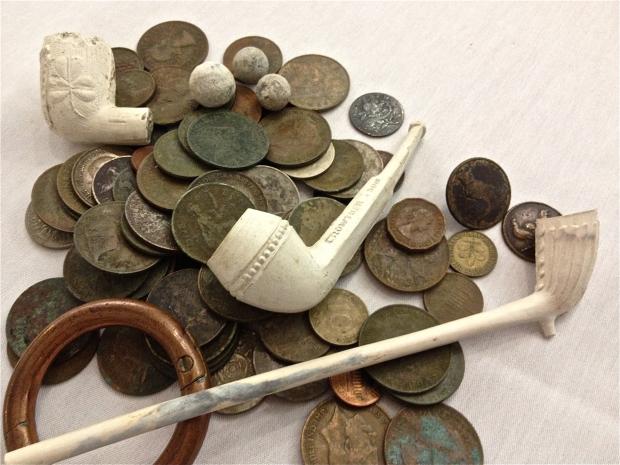
To Ritterbush, finding an object is merely Step One in the discovery process. “I believe that ‘context’ leads to a greater appreciation of everything,” she explains on her website, www.drbeachcomb.com. What is this? How old is it? How did it get here? Her inner anthropologist can’t help but scratch for answers.
In addition to the British bottle fragment, she returns with a pouch bulging with other variously colored, sea-polished shards of glass. There’s a bottle top she found in Maine that’s at least a century old. “That’s called ‘sun purple,’” she says of its tint. The black bottle fragment, she reveals by way of an iPhone’s flashlight, is actually a rich, dark green.

Ritterbush sidetracks into discussing early glassmaking and her favorite stone, quartz: “There are two types, the crystal form you can see through and cryptocrystalline, which you can’t see through. On the Chesapeake you find really pure cryptocrystalline quartz.” She pads off again to fetch samples: smooth stones ideal for skipping across water. Her absolute favorites are rose-colored.
She also shows me one of her most cherished discoveries, the red glass eye from an old Chesapeake duck decoy. It’s kind of a personal talisman.
“Sometimes when you beachcomb, remarkable things happen; you find a treasure that really seems meant for you but doesn’t make any sense in some ways,” she says. “My duck decoy eye was one.” She found it in Bay Ridge on a bitterly cold day when she was in “a really sad mood.” Her husband was away, leaving her to care for their three children while she worked from home. Bills were mounting and her bosses were being especially bossy. She took her dog for a walk at low tide, hoping to find an uplifting souvenir.
“I went down to the water’s edge and there was nothing. Just as I was turning, something red was flashing in those slushy waves,” she recalls. “I looked back down, and it rolled again. I thought I’d better grab it.” So, she did. “I opened my hand and there was this remarkable thing. I had no idea what it was.” A friend later correctly identified it.
To Ritterbush, beachcombing has spiritual, even extrasensory, qualities. “You feel like you’ve come to a place where the sacred and profane meet—a thin space,” she says, referencing an old Celtic term. “It’s that place where we’re all connected, we’re all one. You don’t get to that that often.”

By her own account, Ritterbush’s journey to intertidal interconnectedness was circuitous. Conceived as a field guide to Chesapeake Bay beachcombing, A Beachcomber’s Odyssey grew in scope after that ersatz duck eyeball washed up at her feet. The man who identified it, a fellow author, encouraged Ritterbush to write something with broader appeal. The result is a 160-page book filled with life lessons, lavish photos, and mini-histories of the beaches she’s “combed” and their treasures. The second volume, due out this fall, resumes the tale following her marriage to a Tongan and chronicles her struggle with midlife and cancer. Her coping mechanism, naturally, was beachcombing.
“It helped eliminate the chaff from the wheat, what’s important and what’s just a waste of time,” she says of her cancer diagnosis. “You want to stay healthy because you want to be able to get up another day and walk on the beach”—a remedy denied her for the better part of a year while she received chemotherapy.
Ten years later, she has recovered, but still suffers from post-chemo peripheral neuropathy that leaves her feet numb when she walks. No matter, apparently, as she demonstrates on a fossil-hunting trip to the shores of Calvert Cliffs, Maryland, about a week later.
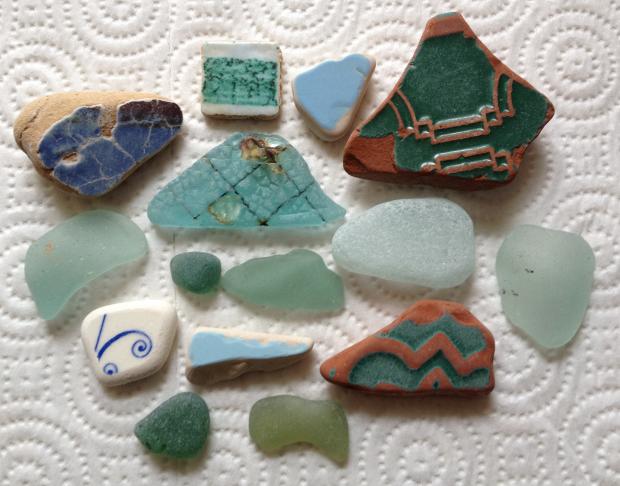
To beachcomb with Ritterbush is to accompany a six-year-old to the seashore; her enthusiasm is boundless and infectious. Within minutes her shores are off, tingly toes be damned. She examines each fossilized shell or prehistoric bone fragment with a mixture of gratitude and awe. Discovering a piece of rose quartz evokes pure joy.
She shares her finds with others and pockets the rest. And she isn’t the only generous ’comber; a total stranger named Timothy gave us shark’s teeth and trilobites that he’d found. (Ritterbush had told me beachcombers are an unselfish bunch.)
Age has slowed Ritterbush a bit. She plans to move back to Annapolis year-round to be near better health care. (And she likes the mid-Atlantic, where “people have Northern brains and Southern charm.”) Her husband, Kilino, wants to help run his family’s farm on a remote Tongan island. They, and their adult children, gather as often as they can.
Dr. Beachcomb’s workshops, summer camps for kids, and the popular International Beachcombing Conferences that Ritterbush founded have given way to smaller excursions reserved for a handful of her regular ’combers.’ They explore her favorite beachy destinations: Hawaii, Oregon, the Delaware seashore, and Canada’s maritime provinces.
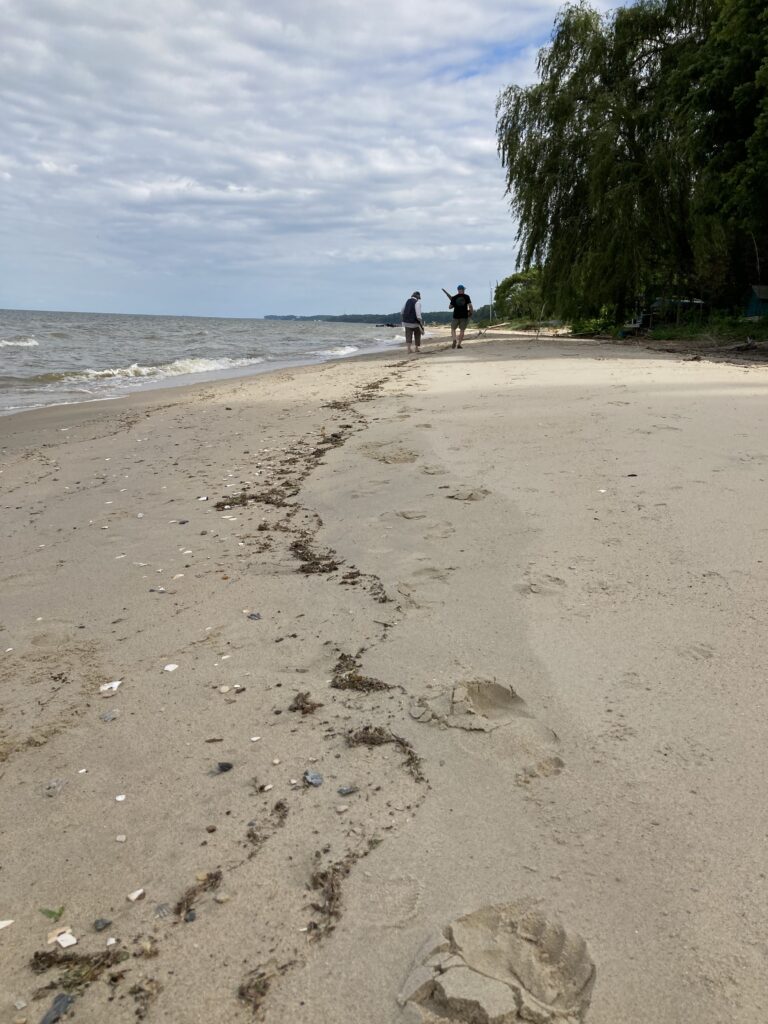
After several hours prowling the high and low tide lines below Calvert’s sheer cliffs, the waves sloshing gently at our feet, Ritterbush plops on the sand to sort through her treasures, urging me to join her. We keep what we want—including scallop half shells that survived intact for millions of years—and leave the rest. Often, she says, she orally thanks the beach for its gifts.
“Sometimes I’ll even sing to it.”


